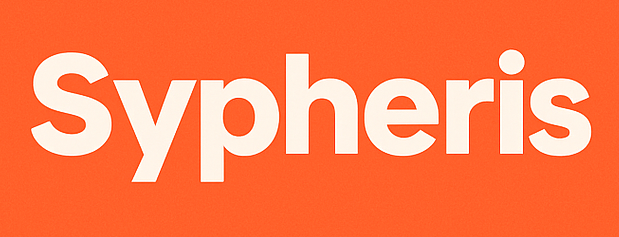Introduction
As economic indicators point to a potential downturn, student loan borrowers face unique challenges in the months ahead. Recent data from the New York Federal Reserve shows alarming trends, with delinquency rates surging from below 1% to 7.7% in Q1 2025, and nearly 23.7% of required-payment borrowers now delinquent. With nearly 6 million borrowers 90+ days past due, the reality of managing student loans recession 2025 scenarios requires immediate attention. This guide offers practical strategies to help you navigate loan repayments during economic uncertainty, protect your credit score, and maintain financial stability even as warning signs flash across the economy.
Understanding the 2025 Recession Risks and Their Impact on Borrowers
The economic landscape for 2025 shows concerning signs that could significantly affect your ability to manage student loan payments. Understanding these risks is the first step toward creating an effective strategy.
Economic Indicators to Watch
According to the UCLA Anderson Forecast, several warning signs point to potential economic challenges in 2025:
- Proposed tariff policies could trigger manufacturing sector contraction
- Potential government workforce reductions of 10-15% affecting up to a million workers
- Construction sector vulnerabilities due to labor market changes
While Deloitte’s baseline scenario projects moderate GDP growth of 2.6% in 2025, inflation remains elevated at 3.1% as of February 2025, creating a challenging environment for borrowers already struggling with payments.
How Recessions Impact Student Loan Borrowers
During economic downturns, student loan borrowers typically face multiple challenges:
- Income reduction or job loss affecting ability to make payments
- Decreased availability of refinancing options as lenders tighten criteria
- Higher competition for available relief programs
- Increased stress on overall household finances
The impact varies significantly by region. Southern states are particularly affected, with Mississippi showing a 44.6% delinquency rate and Alabama at 34.1% according to the latest Federal Reserve data. Understanding these regional variations can help you assess your personal risk level.
Student Loan Budgeting 2025: Creating a Recession-Proof Plan
Effective student loan budgeting 2025 strategies require a proactive approach that accounts for potential economic challenges while maintaining your financial stability.
Creating a Recession-Proof Budget
- Conduct a comprehensive financial assessment
Document all income sources, essential expenses, and discretionary spending to identify areas where you can reduce costs if necessary. - Build an emergency fund for student loans
Aim to save 3-6 months of living expenses, including your student loan payments, to create a financial buffer during uncertain times. - Implement the 50/30/20 rule with modifications
Allocate 50% of income to necessities (including student loans), 30% to wants, and 20% to savings and debt reduction. During recession risks, consider shifting more toward necessities and savings. - Create multiple budget scenarios
Develop plans for different income levels: current income, 25% reduction, and 50% reduction. This preparation helps you adapt quickly if your financial situation changes.
Prioritizing Debt in Uncertain Times
When facing potential economic challenges, strategically managing your debt becomes crucial:
- Highest interest debt first: Focus extra payments on private student loans or credit cards with high interest rates
- Secured before unsecured: Prioritize mortgage and auto loans before unsecured debt
- Federal student loans last: These offer the most flexibility and protection during hardship
Creating a student loan budgeting 2025 worksheet can help you visualize and track your progress. Include columns for minimum payments, target payments, and actual payments to stay accountable.
Managing Federal Student Loans During Economic Uncertainty
Federal student loans offer more flexible repayment options than private loans during economic downturns. Understanding these options can help you navigate financial challenges more effectively.
Available Student Loan Relief Programs 2025
The Department of Education offers several programs designed to help borrowers during financial hardship:
- Income-Driven Repayment (IDR) Plans
These plans cap your monthly payment at a percentage of your discretionary income, potentially reducing payments significantly during income reductions. - Deferment and Forbearance
These options allow you to temporarily pause payments during specific hardship situations, though interest may continue to accrue. - Public Service Loan Forgiveness (PSLF)
If you work in qualifying public service, continuing to make payments during a recession counts toward the 120 payments needed for forgiveness. - Fresh Start Initiative
This program helps borrowers in default return to good standing, which is particularly valuable during economic uncertainty.
For the most current information on these programs, visit StudentAid.gov to explore your options.
Navigating Income-Driven Repayment Plans in a Downturn
Income-driven repayment plans can significantly reduce your monthly payments during periods of reduced income. However, there are important considerations:
- Nearly 2 million IDR applications are currently backlogged
- Only 79,000 applications were processed in April 2025
- Processing timeline could extend beyond two years
To improve your chances of timely processing:
- Apply online rather than by mail
- Submit all required documentation at once
- Follow up regularly on your application status
- Consider requesting an administrative forbearance while waiting for processing
Learn more about optimizing your IDR application in our comprehensive IDR application guide.
Emergency Measures for Financial Hardship
When facing severe financial challenges during a student loans recession 2025 scenario, you may need to take more dramatic steps to protect your financial health.
When to Consider Student Loan Deferment Recession Options
Student loan deferment recession options provide temporary relief from payments during financial hardship. Consider deferment when:
- You’ve experienced job loss or significant income reduction
- You’re facing unexpected medical expenses
- You’re enrolled in graduate school or qualifying training program
- You’re serving in the military during a national emergency
While student loan deferment recession programs pause payments, interest may still accrue on certain types of loans, particularly unsubsidized loans. This means your balance could grow during deferment.
Refinancing Considerations During Economic Uncertainty
Refinancing federal student loans into private loans offers potential interest savings but eliminates federal protections. During recession risks, consider these factors:
- Job stability: Only refinance if your income is secure
- Emergency savings: Ensure you have 6+ months of expenses saved
- Interest rate environment: Evaluate whether current rates offer significant savings
- Federal protections: Weigh the value of IDR plans and forgiveness options
For most borrowers, maintaining federal student loans during economic uncertainty provides valuable flexibility that outweighs potential interest savings from refinancing.
Understanding Student Loan Delinquency Rates 2025 and Credit Impact
The current student loan delinquency rates 2025 data shows concerning trends that could worsen during a recession. Being aware of these impacts can help you prioritize payments effectively.
Credit Score Implications
Recent data shows severe consequences for borrowers who fall behind:
- Over 2.2 million borrowers experienced credit score drops exceeding 100 points
- Some borrowers lost 150+ points from their credit scores
- Credit score impacts can affect housing, employment, and future borrowing costs
To protect your credit during financial challenges, consider these strategies from our budgeting tips guide:
- Communicate proactively with loan servicers
- Request hardship options before missing payments
- Document all communications and keep payment confirmations
- Check credit reports regularly for errors
Warning Signs and Preventive Measures
Watch for these warning signs that indicate you need to take immediate action:
- Using credit cards to make student loan payments
- Consistently paying late or making partial payments
- Depleting emergency savings to cover regular expenses
- Receiving collection calls or notices
If you notice these warning signs, contact your loan servicer immediately to discuss options. Avoid third-party companies charging fees for free federal services, as these are often scams targeting vulnerable borrowers.
Frequently Asked Questions About Student Loans During a Recession
Can I pause my student loans during a recession?
Yes, federal student loans offer deferment and forbearance options during financial hardship. Income-driven repayment plans can also reduce payments based on your income. Private loans have fewer options, but many lenders offer hardship programs—contact them directly to discuss your situation.
Will there be student loan forgiveness during the 2025 recession?
While targeted loan forgiveness programs exist, widespread forgiveness during a recession remains uncertain. Focus on existing relief programs like income-driven repayment, which offers forgiveness after 20-25 years of payments, and Public Service Loan Forgiveness for qualifying employment.
How will a recession affect my ability to refinance student loans?
During recessions, lenders typically tighten approval criteria for refinancing. You’ll need excellent credit (700+), stable income, and a low debt-to-income ratio. If you’re considering refinancing, doing so before economic conditions worsen may provide better terms.
Should I prioritize student loans or emergency savings during a recession?
In most cases, building an emergency fund of at least 3 months’ expenses should take priority over making extra student loan payments during recession concerns. Once you have this safety net, you can balance additional loan payments with continued savings based on your job security and loan terms.
Conclusion
Navigating student loans recession 2025 scenarios requires proactive planning and knowledge of available options. By creating a recession-proof budget, understanding federal relief programs, and taking quick action at the first sign of financial difficulty, you can protect your financial future even during economic uncertainty. Remember that your strategy may need adjustment as economic conditions and your personal situation evolve. Subscribe to our monthly newsletter for ongoing financial tips and updates on student loan policies that could affect your repayment strategy.
Meta Description: Worried about student loans in a 2025 recession? Get practical tips to survive payments, protect your credit, and navigate relief options during economic uncertainty.
Disclaimer: This article provides general information about managing student loans during economic uncertainty. Consult a financial advisor for personalized advice tailored to your specific situation.



